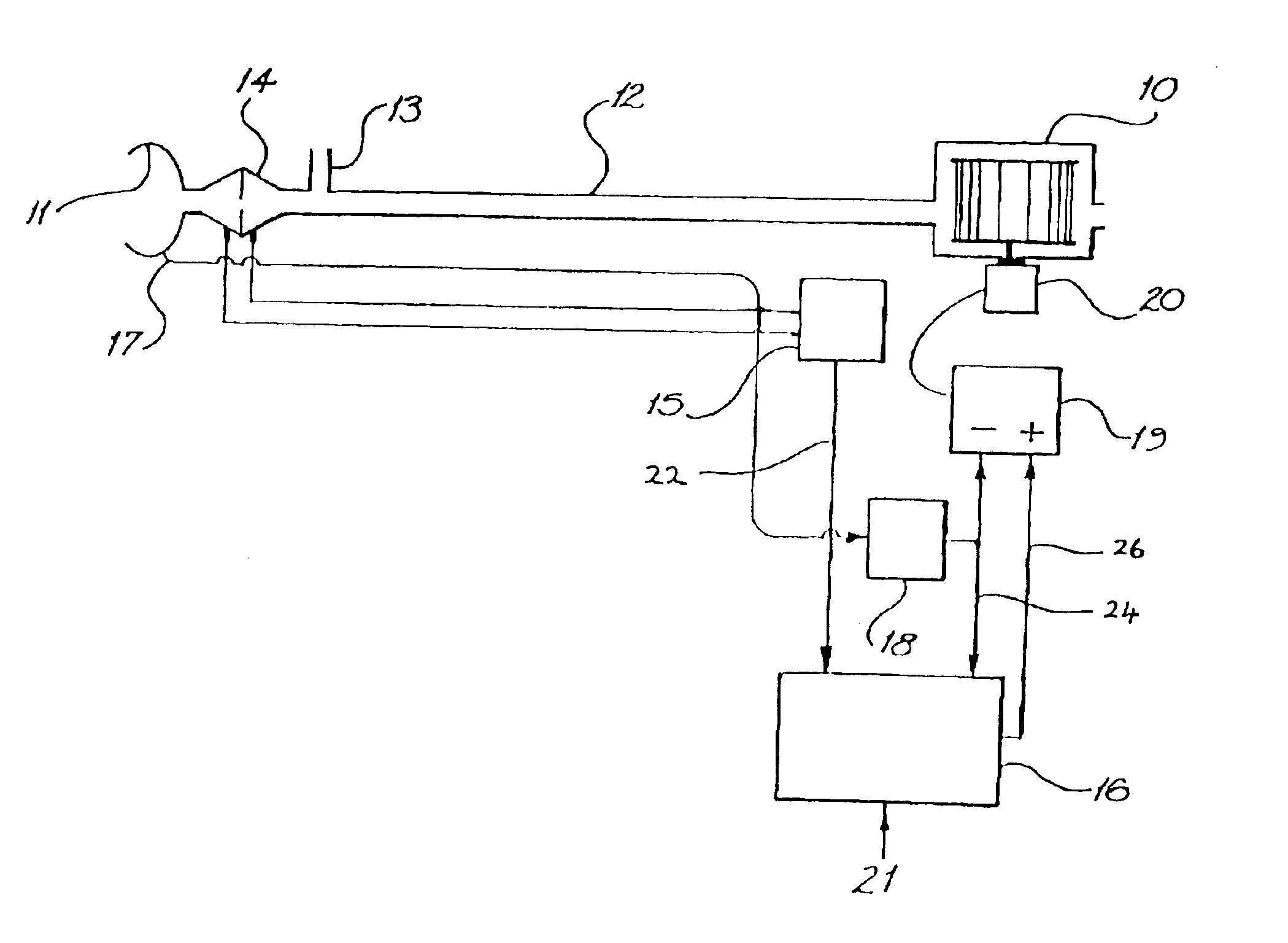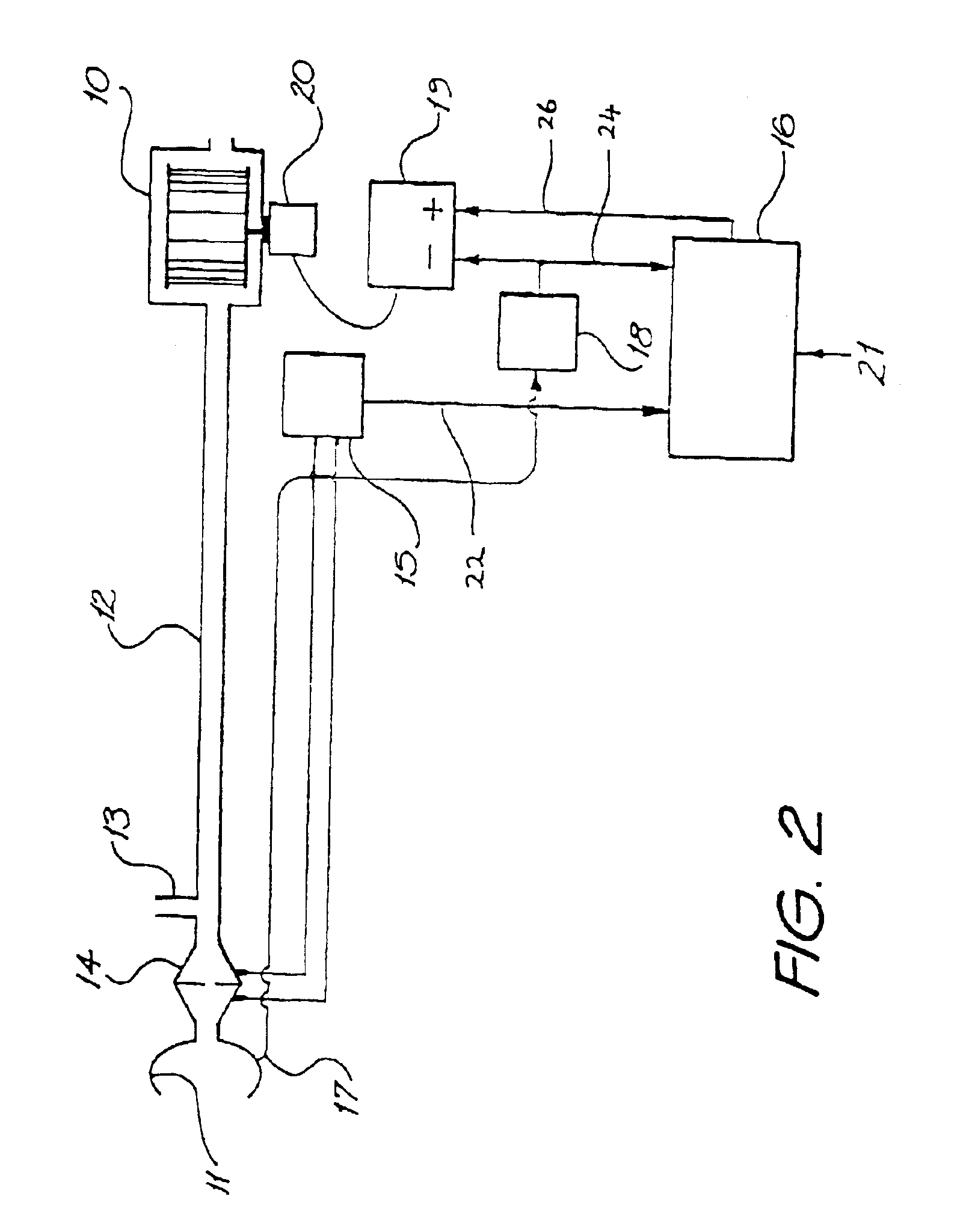Ventilatory assistance for treatment of cardiac failure and cheyne-stokes breathing
a ventilatory assistance and cardiac failure technology, applied in the field of positive pressure ventilatory assistance, can solve the problems of cardiac failure patients with repetitive deoxygenation and reoxygenation of arterial blood, and reduced cardiac ejection fraction, so as to improve the symptoms and signs of cardiac failure, improve comfort, stabilize or prevent cheyne-stokes breathing
- Summary
- Abstract
- Description
- Claims
- Application Information
AI Technical Summary
Benefits of technology
Problems solved by technology
Method used
Image
Examples
Embodiment Construction
[0079]A ventilator embodying one form of the invention is shown in FIG. 2 in which a blower 10 supplies breathable gas to a mask 11 for communication with a subject's airway via a delivery tube 12 and exhausting to atmosphere via an exhaust 13. Airflow at the mask 11 is measured using a pneumotachograph 14 and a differential pressure transducer 15. The mask flow signal 22 from the transducer 15 is sampled by a microcontroller 16. Mask pressure is measured at port 17 using a pressure transducer 18. The pressure signal 24 from the transducer 18 is also sampled by the microcontroller 16. The microcontroller 16 sends an instantaneous mask pressure request signal 26 to a servo 19, which compares the pressure request signal (ie. the desired pressure signal) 26 with the actual pressure signal 24 from the transducer 18 to control a motor 20 driving the blower 10. The microcontroller 16 settings can be adjusted via a serial port 21.
[0080]It is to be understood that the mask could equally be ...
PUM
 Login to View More
Login to View More Abstract
Description
Claims
Application Information
 Login to View More
Login to View More - R&D
- Intellectual Property
- Life Sciences
- Materials
- Tech Scout
- Unparalleled Data Quality
- Higher Quality Content
- 60% Fewer Hallucinations
Browse by: Latest US Patents, China's latest patents, Technical Efficacy Thesaurus, Application Domain, Technology Topic, Popular Technical Reports.
© 2025 PatSnap. All rights reserved.Legal|Privacy policy|Modern Slavery Act Transparency Statement|Sitemap|About US| Contact US: help@patsnap.com



